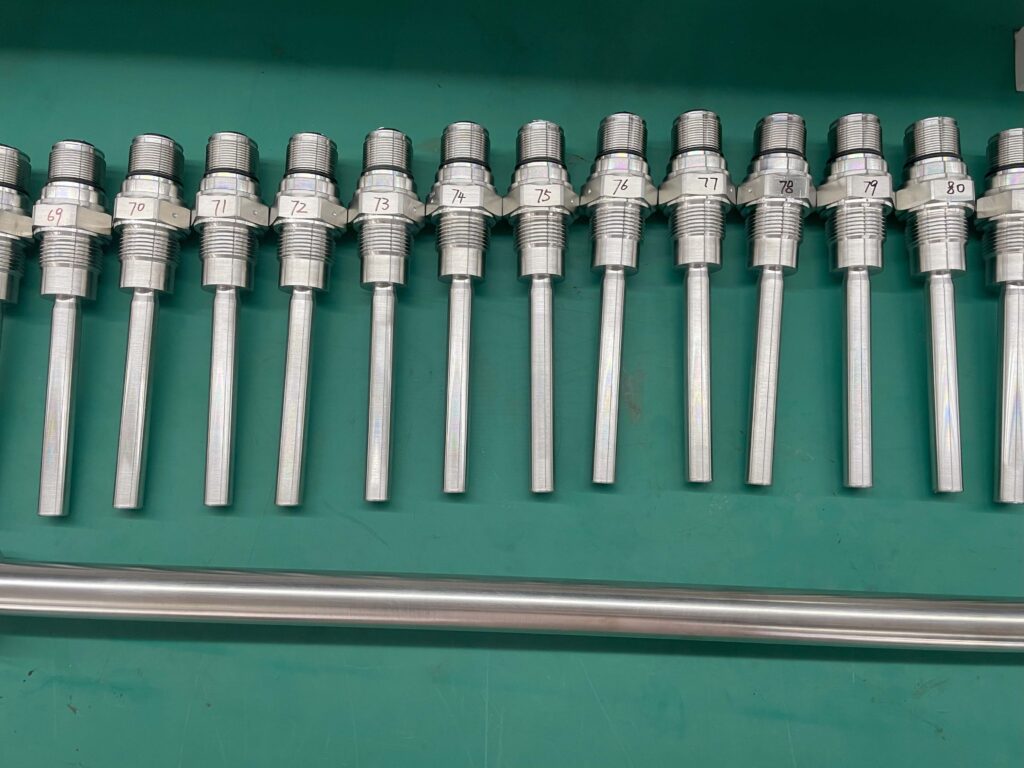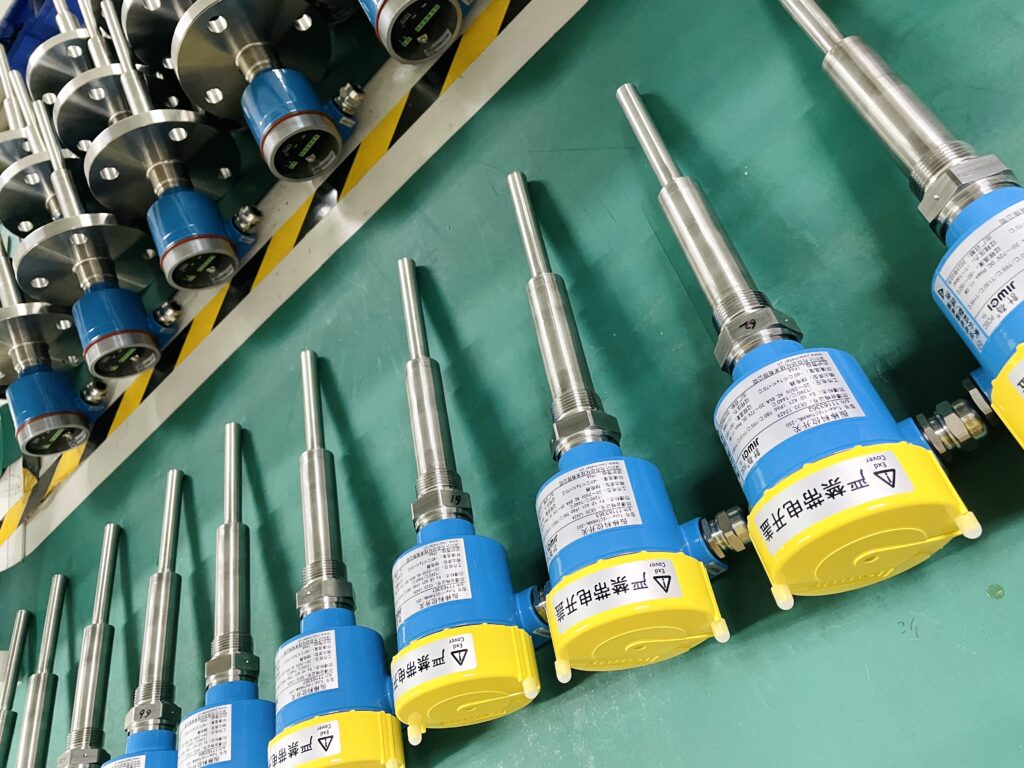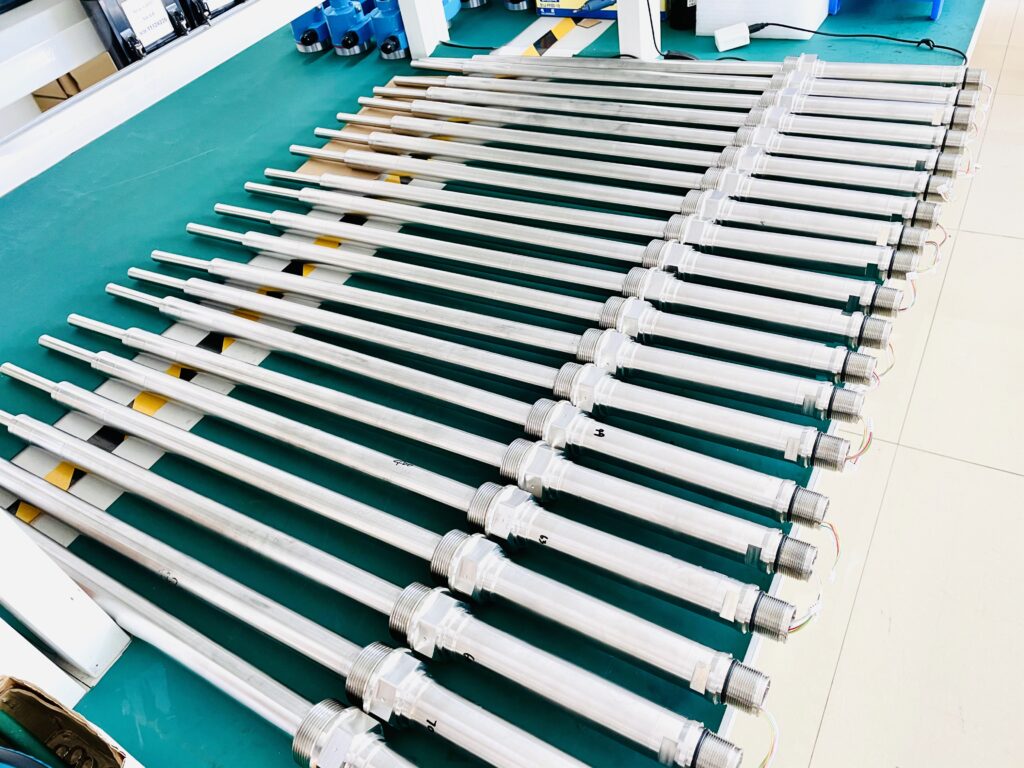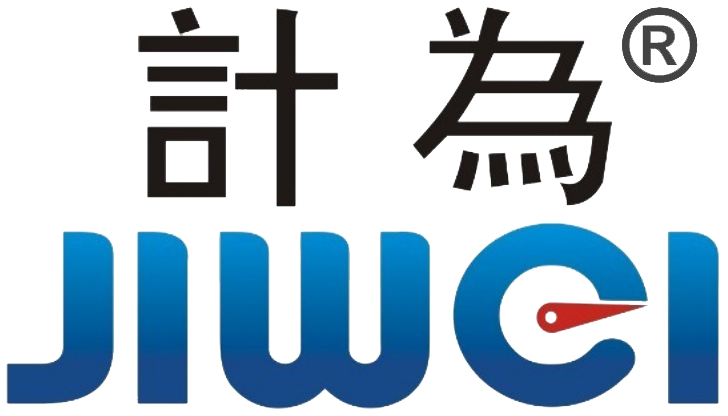Differences Between Stainless Steel Seamless and Welded Pipes
Stainless steel is widely used in level measurement instruments and across various industries, thanks to its excellent overall performance and attractive surface characteristics. Among stainless steel components, pipes are critical structural elements. They generally fall into two categories: stainless steel seamless pipes and stainless steel welded pipes. Understanding their differences is essential for selecting the right material for a given application.
At Jiwei, our vibrating rod level switches feature an extended probe made of stainless steel seamless pipe, ensuring higher reliability and structural integrity in demanding industrial conditions.
1. Key Differences Between Stainless Steel Seamless Pipes and Welded Pipes
The distinctions between seamless and welded pipes mainly arise from their manufacturing processes and mechanical performance characteristics.
a. Manufacturing Process
- Welded Pipes are formed by rolling stainless steel plates or strips into a cylindrical shape and welding the seam. The inner wall of the pipe typically contains a visible welding line.
- Seamless Pipes, on the other hand, are manufactured using round billets that are perforated and shaped via cold rolling, cold drawing, or hot extrusion. As the name suggests, they have no welded joints, which enhances their integrity and performance under pressure.

b. Surface and Dimensional Precision
- Welded Pipes generally have better wall thickness uniformity, higher dimensional precision, and a smoother internal and external finish. They can also be customized to thin-walled designs and specific lengths.
- Seamless Pipes often exhibit less uniform wall thickness and lower surface brightness. Internal and external defects such as pitting and black spots are more common and harder to eliminate. As a result, seamless pipes tend to be produced with thicker walls.
c. Performance and Cost
- Seamless Pipes have superior corrosion resistance, pressure resistance, and high-temperature tolerance, making them ideal for critical industrial applications.
- While the performance of welded pipes has improved with advancements in manufacturing techniques, they still lag behind seamless pipes in extreme conditions.
- Due to their more complex production process, seamless pipes are typically more expensive than welded pipes.
2. How to Choose Between Stainless Steel Seamless and Welded Pipes

Given the functional and economic differences between the two types, it’s crucial to make the right selection based on application needs, mechanical requirements, and cost considerations. Here are some general guidelines:
a. For Decorative or Light-Duty Applications
- When appearance and surface finish are priorities—such as in furniture, props, or architectural elements—welded pipes are preferred.
b. For Low-Pressure Fluid Transport
- In low-pressure systems transporting water, oil, gas, or hot water (typically under 0.8 MPa), welded pipes are usually sufficient and more cost-effective.
c. For High-Pressure or High-Temperature Applications
- In industrial projects, power plants, or nuclear applications where fluid pipelines must withstand high temperature and pressure, seamless pipes are mandatory for safety and durability.
d. Based on Pressure Requirements
- Welded pipes are generally suitable for pressures below 0.8 MPa.
- Seamless pipes are recommended for pressures above 0.8 MPa or where reliability is paramount.
Why Jiwei Chooses Seamless Pipes for Vibrating Rod Level Switches
In our extended-length vibrating rod level switches, Jiwei exclusively uses stainless steel seamless pipes to ensure optimal structural strength, chemical resistance, and temperature tolerance. This design choice supports long-term stability even in challenging environments such as powder silos, chemical tanks, and corrosive storage vessels.

By selecting seamless pipes over welded alternatives, we minimize the risk of mechanical failure, corrosion at weld joints, and performance instability—delivering lasting value to end users.
Conclusion
Understanding the practical differences between stainless steel seamless and welded pipes is vital for engineers and procurement teams. For critical industrial applications where pressure, temperature, and corrosion resistance are significant concerns, seamless stainless steel pipes offer a clear advantage. Jiwei’s use of seamless tubing in vibrating rod level switches exemplifies our commitment to reliability and product excellence.
